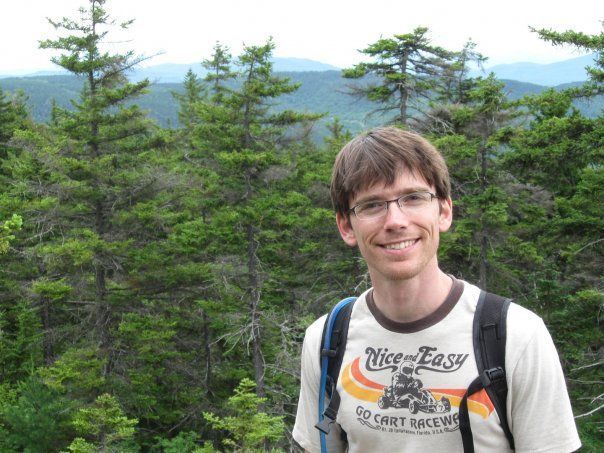Nearing graduation from the University of Vermont, I set my sights on one special project: gaining admission to Teach for America (TFA). They recruit college graduates who commit to two-year stints teaching in underprivileged communities with the aim of closing the achievement gap. Last year, 44,000 applicants vied for 4,000 positions. According to Tom Rath and Barry Conchie in “Strengths Based Leadership,” it’s “now regarded as one of the most selective and prestigious jobs in the United States, even for Ivy League graduates.”
Perhaps because the interviewer admired my tenacity in running long distances, Teach for America offered me a position in one of the poor neighborhoods of Las Vegas. While attending TFA’s training program, I learned that I had won a spot teaching first grade. Though I wanted to serve at-risk children, I asked if there was any flexibility to work with an older age group. The answer was no. The new program in Clark County would also require that we take a full-time college course load while working as hastily prepared first-year teachers in some of the city’s most difficult, overcrowded classrooms. With disappointment but also with an eye trained on my own future health, I withdrew from TFA. While shopping in a Las Vegas Whole Foods seven months later, I ran into Sarah, one of my standout former TFA colleagues. Sarah hadn’t dropped out.
Looking haggard, she clutched my arm in one hand and a slapdash salad in the other. She said, “You’re so lucky! I hate it. It’s driving me insane.”
Later, I learned research shows student performance under TFA instructors approximately on par with student performance under average teachers. A friend confided in me about TFA’s overzealous preoccupation with test scores. Some criticize TFA for promulgating an elitist and mistaken narrative where underprepared do-gooders ostensibly swoop in to fix broader cultural problems.
That’s not to say that Teach for America gets it all wrong. They do have an admirable goal. They do channel some of the country’s best graduates toward education. Other studies show that under corps members, students get the equivalent of one extra month of instruction over the course of a year.
Was TFA all that I hoped for? No.
Instead, it was an object lesson in the nuance of reality. Across the board, things are far more complicated than they first appear.
Take the European migrant crisis as an example. News outlets and social media brim with tirades from the left and right, which cover the spectrum from encouraging unmitigated immigration to the vilification of all Muslims as terrorists. Naturally, reality is more complicated.
New York Times columnist Nicholas Kristof writes, “The top priority must be making Syria habitable so that refugees need not flee.” That makes sense. However, English author and researcher Douglas Murray states that Syrians only make up a minority of the migrants. He explains, “When people say, ‘Oh, we could sort out the situation in Syria and that would stop the migration,’ they are flat out wrong… You could pretend to sort out the situation in Syria, but what’s your plan for Eritrea? … This is very largely and in the main not an asylum issue, not a refugee issue. It is an economic migrant issue.”
Kristof writes, “When Indiana today shuns desperate refugees, it is shunning people like my family.” His point: America and Europe should welcome refugees because it’s the compassionate thing to do for vulnerable people. Fair enough. However, Murray critiques this point by saying, “Being sad isn’t enough. Being sad will stop no massacres. Being sad will not divert one Islamist.”
Kristof claims the vetting process for immigrants to the United States is utterly rigorous. But is it perfect? Warning against even small infiltration of jihadists into European society, Murray says, “If a politician wants to say, for every 100,000 people who come into Europe, maybe only 20 are jihadists. The European public can then work out – twenty people, that’s twice as many people who seemed to be involved in the Paris attacks the other day. Maybe that means we only need to lose 400 people to terrorist shootouts every few months.”
The migration discussion, like all things, is complicated.
Stewing in social media or sensationalist news programs only cheapens these conversations, because soundbites grab our attention. Simple explanations gain traction. People paint issues in black or white, and hanging out in an echo chamber with likeminded friends only makes these shallow statements more resonant. It’s easy to pass on misinformation and propaganda when they’re attached to a zinger.
I’m guilty of it too. I don’t always think deeply about the issues, cast doubt on my assumptions, or look without bias at the evidence. I took Teach for America at face value. A closer look reminded me that all initiatives and ideas come in shades of gray.
I want to rekindle this lesson, especially every time I hear something condescending or hysterical or even flawless. The truth is deeper. The answers are less glib. The fabric of reality is richer. As a lover of knowledge and accuracy, I vow to give short shrift to the next platitude served up as fact. I think my life and my country deserve that and more. Don’t you?
Daniel McNeil is the director of Grand Area Mentoring.



